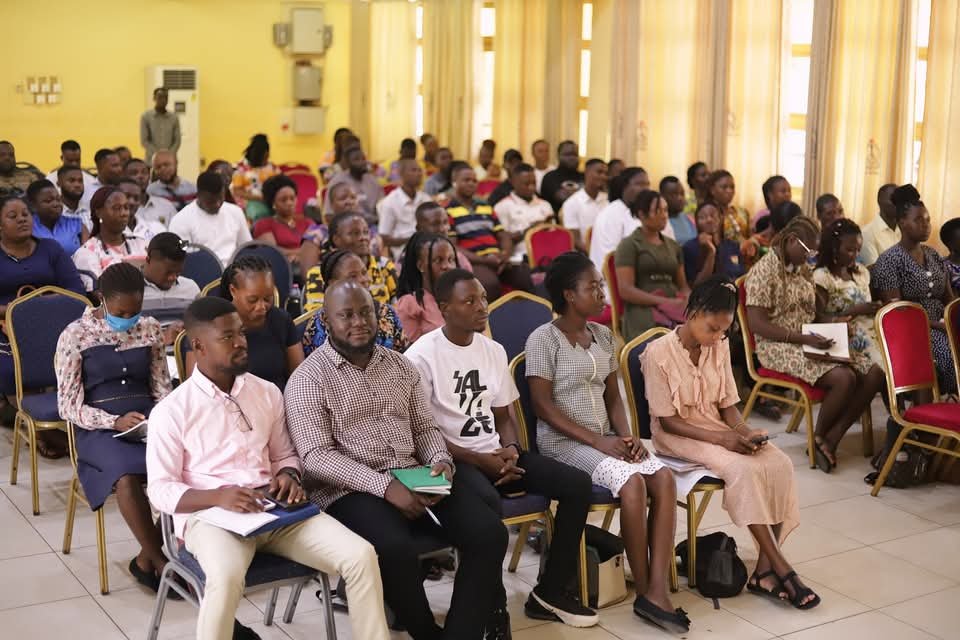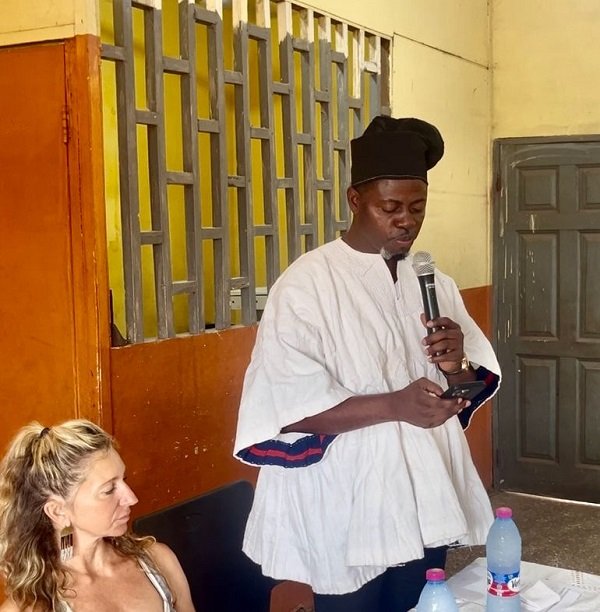News
100 Teachers Undergo Digital Training in Ho

The Ministry of Communications, Digital Technology and Innovations (MoCDTI), in collaboration with the Volta Regional Coordinating Council, has commenced a week-long Training of Trainers (ToT) workshop under the National Girls-in-ICT initiative.
The training aims to equip 100 selected teachers with essential Information and Communication Technology (ICT) skills to mentor 1,000 girls across 18 districts in the Volta Region.
The workshop is designed to build the teachers’ capacity in areas such as Web Development, Cybersecurity, Coding, Game and Animation Development, and general ICT literacy.
This initiative forms part of the Ministry’s broader effort to close the gender digital divide by empowering girls with the skills and confidence to thrive in a digital world.
Speaking on behalf of the Minister for Communications, Digital Technology and Innovations, Samuel Nartey George, the Director of Policy, Planning, Budget, Monitoring and Evaluation (PPBME), Mr. Austin Hessin, underscored the importance of the initiative in addressing gender disparities in digital access and education.
Citing the International Telecommunication Union’s (ITU) 2023 Strategic Report, Mr. Hessin revealed that nearly 250 million more men than women are online globally, with Ghanaian girls particularly affected in accessing mobile internet and digital tools.
“Despite improvements in access and affordability, a significant digital gender gap persists. This programme is more than a training exercise—it is a transformational agenda that shapes futures,” he said.
He highlighted that the Girls-in-ICT programme, spearheaded by the Ministry in partnership with the Ghana Investment Fund for Electronic Communications (GIFEC), the Kofi Annan Centre of Excellence in ICT (KACE), and other stakeholders, has so far trained 14,981 girls and 1,192 teachers nationwide.
Mr. Hessin added that the current training is being facilitated by experts from KACE and focuses on both technical skills and pedagogical approaches to enable the teachers to become effective mentors in their communities.
He acknowledged the financial support of MTN Ghana and American Tower Corporation, as well as the logistical backing provided by local government agencies.
“Our goal is to build a generation that leads in innovation—not one left behind by it,” he noted, urging participants to approach their roles as digital mentors with purpose and commitment.
The Chief Director of the Volta Regional Coordinating Council, Mr. Augustus Awity, also addressed the gathering. He linked the Girls-in-ICT initiative to broader national education priorities, highlighting that over GH¢1.2 billion has been allocated for teacher training in the 2025 National Budget.
“This training marks the beginning of a transformative journey for thousands of girls. You are the vanguards of this educational revolution,” Mr. Awity remarked.
Mr. Francis Yao Agbemadi, Volta Regional Director of Education, stressed the importance of fostering supportive learning environments that build confidence and inspire girls to pursue careers in technology.
News
Support Street Academy to Break Cycle of Poverty in Society — Odododiodioo MP

Mr. Alfred Nii Kotey Ashie, the Member of Parliament for the Odododiodioo Constituency in the Greater Accra Region, has assured the Accra Street Academy of his support in achieving its mission of uplifting vulnerable children within the community to break the cycle of poverty. “Without the needed support, your efforts may go round in circles due to the enormity of the task. This should not be left on the shoulders of the Academy alone. You need support from both government and the private sector. With that, the Academy would be in a good position to shape the future of these children on the streets,” he said.
The Accra Street Academy, originally formed in 1985 as a boxing arena, now serves as a school for deprived children, with most of its population numbering hundreds of pupils being neglected children from the streets of Jamestown and its environs. Mr. Alfred Nii Kotey Ashie made these remarks at the annual stakeholders’ meeting and fundraising event held over the weekend under the theme “Empowering Street Children: Health and Wellness.” The event is one of the Academy’s annual programmes, organized to raise funds and other forms of support to aid the school in catering to the needs of the children and holding its Christmas get-together.
According to the MP, it is worth noting that these children are taught and provided with two meals and a snack daily through the support of benevolent members of society. In view of this, he promised to facilitate the acquisition of documents needed for the construction of an Astroturf within the school’s premises. He noted that “every child has the right to play, and therefore I pledged to do my best to secure the needed documents” for the project to commence.
The legislator disclosed that over the years, the academic programmes of the Accra Street Academy have transformed children surviving on the streets into successful adults. He therefore urged other members of society to partner with the school to “help pupils rise higher for a better Ghana.” In the 2025/26 academic year, 22 pupils were absorbed by the Accra Metro Education Directorate as they transitioned into various Junior High Schools, while still returning to the Accra Street Academy for academic support.
Ms. Yvonne Abba-Opoku, a chartered governance advisor and senior executive in the nonprofit and charity sector, stated that the best gift to give a child was education.
By Spectator Reporter
Join our WhatsApp Channel now!
https://whatsapp.com/channel/0029VbBElzjInlqHhl1aTU27
News
Attend antenatal clinics for safe delivery … expectant mothers urged

Mrs Regina Kudom, Senior Midwifery Officer at the New Atuabo Health Centre in the Tarkwa Nsuaem Municipality, has urged expectant mothers to attend antenatal clinic regularly for safe delivery.
She revealed that “in Tarkwa and its environs many pregnant women prefer staying at prayer camps, we are not against that, you can be there, but when your time is up for your antenatal session make sure you attend.”
Mrs Kudom gave the advice when the Gold Fields Ghana Foundation (GFGF) observed the World Prematurity Day with pregnant women at New Atuabo, Huniso and Awudua health centres.
World Prematurity Day falls on November 17, every year, and it is celebrated to raise awareness about the challenges faced by pre-term babies and their families.
She said research suggested that sex during pregnancy could soften the cervix and potentially aid in labour preparation.
“That is the reason why we encourage pregnant women to have sex with their partners, if they do not have any health implications,” she added.
Mrs Kudom appealed to the GFGF to upgrade the New Atuabo health centre as the current structure was too small because they received many patients daily.
Madam Ayishetu Mohammed, Project Coordinator for GFGF, explained that they received donations from Project C. U. R. E and the items were given to health facilities in their operational area.
She stated that they noticed there were baby dresses, sanitary pads, and baby apparel, so they decided to distribute them among expectant mothers in three of their host communities.
Madam Mohammed said because the foundation was interested in preventive care, they brought a midwife from the Tarkwa Mine hospital to educate the pregnant women.
She extolled the midwives in New Atuabo health centre for the education they gave to the pregnant women and implored them to heed to the advice given during antenatal visits to reduce maternal deaths in the Tarkwa Nsuaem and Prestea Huni-Valley Municipalities.
Mr Paa Kwasi Egan, Deputy Chief Physician Assistance, emphasised that a pregnant woman being anemic meant she was not eating a balance diet, and added that, “Some of these women do not have money to buy food or visit antenatal clinics.”
He said when men follow their wives for antenatal visits, they would be educated extensively on why they should provide funds for their pregnant wives.
Mr Egan, therefore, encouraged all men to be involved in their pregnant wives’ antenatal care appointments so they could learn more about pregnancy, childbirth, and parenting. – GNA















